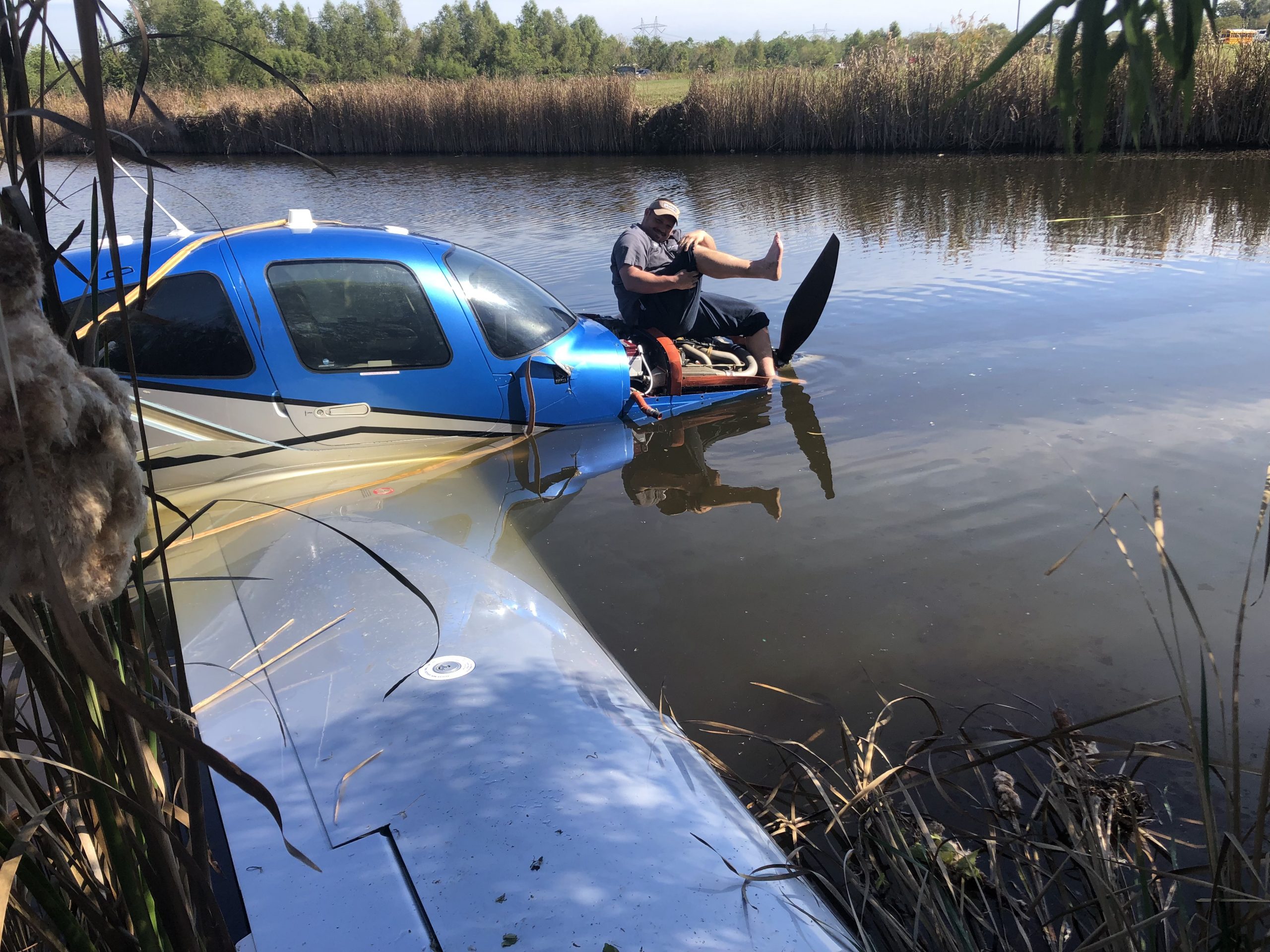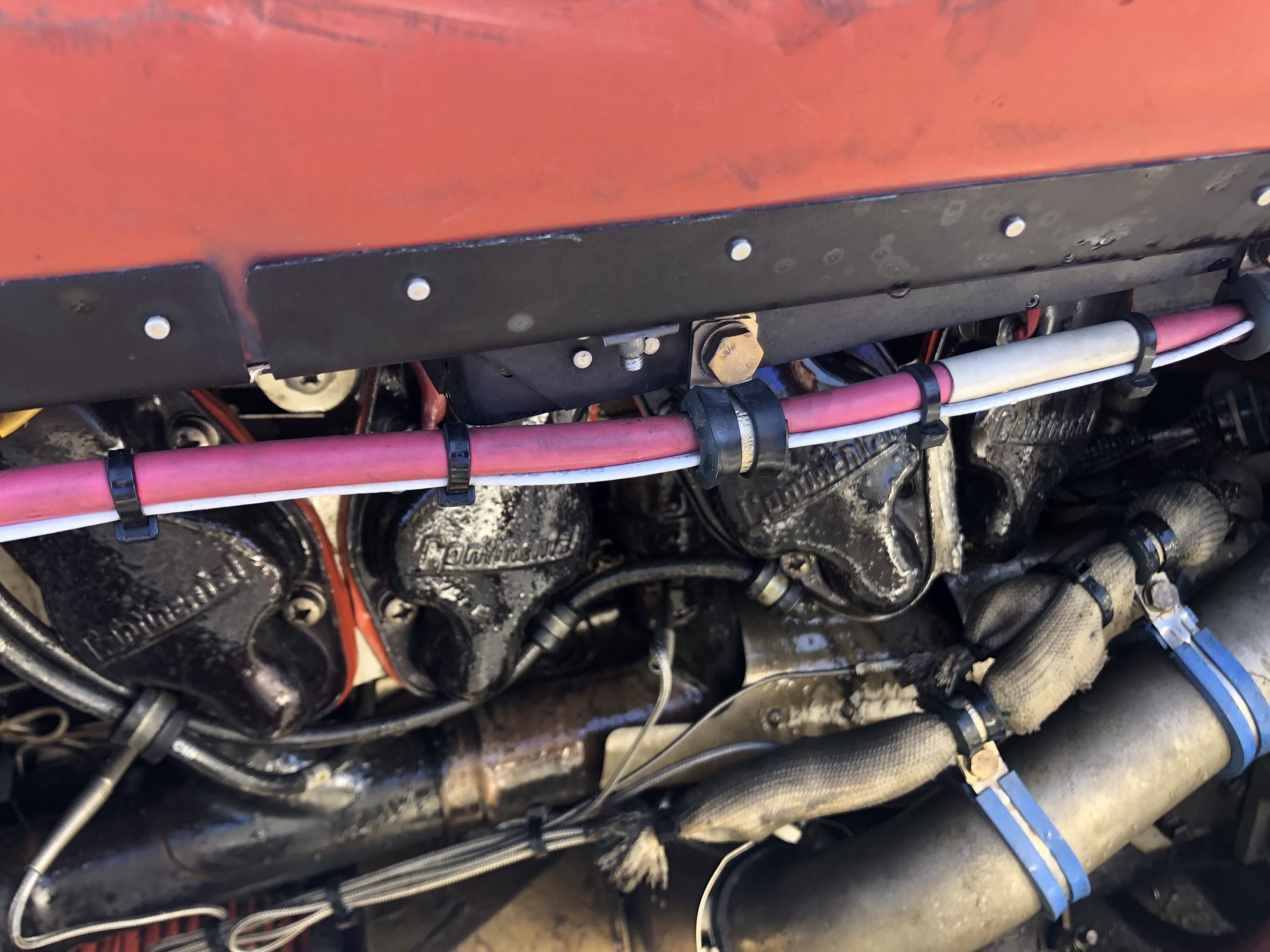Cirrus Parachuting in a Pond near LA Regional

N217SY nestled in the pond
On Friday, Nov 11, 2022, at approximately 1041 local, N217SY, a 2017 Cirrus SR22T (turbo) developed an engine problem of zero oil pressure and parachuted into a pond about 2nm north of the LA Regional airport.
The pilot was on a flight from Lafayette to Stennis airport at 7000’ when he observed engine roughness and manifold pressure very erratic. Coordinating with New Orleans tower he was cleared to proceed over Lake Ponchartrain to KREG, in hopes of returning to the Cirrus Service to fix his “engine problem.” No “emergency” was initially declared.
The pilot eventually did “declare an emergency” as he was experiencing more and more erratic engine operation and observed smokey oil coming from the engine compartment. While handling his emergency of impending engine failure, he had the presence of mid to video the engine parameters during his direct flight to KREG. Unfortunately, his engine quit just a few miles north of KREG and he set up for his glide from now 5000’ AGL. Realizing he did not have the flight energy to glide to the runway he “pulled the CAPS parachute handle” at 700’ AGL, but not before steering clear of the local River Parishes Community College and the Alliance Safety Council testing facility.

Plane partially submerged in the pond

CAPS parachute came to rest on the parking lot pavement, still attached to the plane.
Everything with the CAPS system “worked as advertised.” N217SY gently floated down to the very edge of a small pond between two buildings. The pilot exited the plane and was able to walk on the wing to the shore of the pond without even getting wet. No injuries!
I learned of the accident shortly afterwards from my pipeline pilot Ken who heard on the radio that a “blue and white Cirrus plane was in a pond near KREG.” My heart skipped a beat cause my previous plane was a blue and white Cirrus. Calling the LA Regional airport lineman, I then learned the plane in the pond was not a blue and white Cirrus, but it was indeed a blue and grey Cirrus, the same color scheme as my new Cirrus, and again my heart skipped a few more beats.

FAA inspector, Gonzales Asst Fire Chief, with
Ascension Parish Sheriff and Gonzales Police deputies

Tail section with parachute lanyard attached

Aircraft lifted up intact
I quickly drove to the scene to see the plane setting in the water, but not underwater. Only the landing gear and nose of the aircraft were partially submerged with the fuselage nestled at the very edge of the pond in the water.

Oil sprayed in engine compartment

Aircraft being trucked on the highway to KREG

Motorcycle escort by Ascension Parish Sheriff
and Gonzales Police
BAD NEWS
Engine ran rough, then quit, and parachute had to be deployed
GOOD NEWS
Everything worked as advertised, and the 118th person was saved by the Cirrus CAP system.
Recommendations from the Pilot
● Turn toward your nearest suitable airport at the onset of any engine problem you don’t understand.
● Don’t let ATC lure you into lowering your cruise altitude, stay high as long as possible.
● Plan your altitude & stick with your plan.
The pilot had attended the Cirrus Owners and Pilots Association (COPA) at the Amelia Island Omni near Jacksonville, FL a few weeks earlier. He said that the Cirrus safety briefing on CAPS encouraged him to not hesitate in his decision to “pull the chute.”
At that COPA Migration, the same safety briefing showed the data of the fatal accident rates for single engine aircraft. Except for the first year of Cirrus aircraft, the fatal accident rate of Cirrus SR aircraft was approximately 50% of that of general aviation aircraft! As of November 25, 2022 there have been 120 saves with 241 survivors in aircraft equipped with the Cirrus Airframe Parachute System (CAPS).
